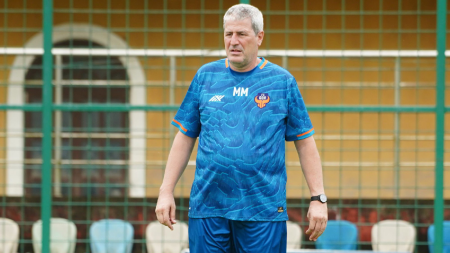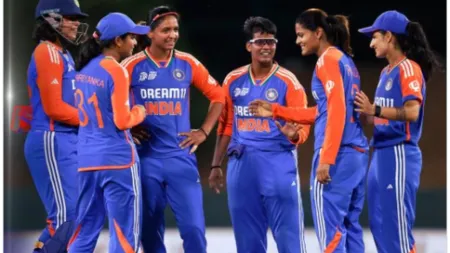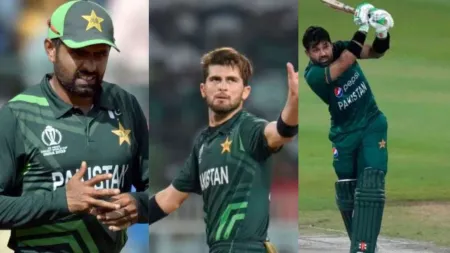How Global Chess League convinced players: Open houses, over-communication, Russian translator and presentation decks in Mandarin
After introducing a desi tadka to the way elite chess tournaments are organised with its first season, the Global Chess League will be back for another season in October this year. In the first edition, the GCL managed a coup of sorts by getting some of the biggest names in the sport to sign up: from world champions like Viswanathan Anand, Magnus Carlsen and Hou Yifan to stars like Ian Nepomniachtchi, Gukesh, Praggnanandhaa, Arjun Erigaisi, Vidit Gujrathi and Tan Zhongyi.
Five-time world champion Anand hailed the league recently as an “Indian way” of organising sport.

“Indians are enjoying lots of sports now. But we like imposing our own business model on it. We want something new. That’s why last year we had the Global Chess League, which was this new Indian way of organising sport,” Anand said at the Express Adda last week.
Convincing players from different countries and cultures was easier said than done, particularly since the GCL would be a team-based league, which had no real precedence in a largely individualistic pursuit like chess. This is why organisers had to go the extra mile ahead of the first season.
“One player we signed for the GCL was someone who spoke exclusively in Russian. Thankfully, there was a person in FIDE who became our translator. For the Chinese players, we also got presentation decks made in Mandarin, which had detailed explanations for how we saw the league happening. It’s not that players absolutely don’t speak or understand English. But just to eliminate any communication gap and make the players completely comfortable, we did these sorts of things. This is how we got players from over 15 countries to sign up,” says Sameer Pathak, the CEO of the Global Chess League told The Indian Express.
Pathak says that there was one player the GCL organisers exchanged over 35 emails just to convince them of their vision for the league.
“Besides the emails, we would also hold something we called an Open House Hour. We would send a link to a conference call to all players that would be active for an hour on specified dates. Any player who had any doubts about the league could just hop in on that call and ask us whatever they had on their mind. We would be on the other end of the calls to allay any concerns,” said Pathak. “These calls would happen after we first approached players, so that anyone who had any doubts could get those cleared up. Then, after the players had signed contracts, we would hold calls so that anyone who wanted to get familiarised with our unique points system, could have clarity. We had four of these Open House calls when we were trying to sign players. Then two more to explain rules to the players.”
In chess, most players know who the organisers are since many tournaments have been held for decades now. So a quick email or a phone call can suffice to get a verbal agreement in place before the organisers can draw up contracts. For the GCL to start, the organisers needed an assist from FIDE, the global governing body of the sport, who made introductions between the organisers and the players.
After these emails, the elite players who showed an interest in participating were explained the concept of the league by the GCL organisers in individual orientation calls.
“Our strategy was to over-communicate so that the players understand how this league will be different from anything they had played in,” said Pathak. “In these calls we explained how the GCL would be different to anything else that they had played in, what our commercial model was and so on. This was so that they understood what a team owner’s expectations from players would be, why they would be wearing those colourful jerseys rather than suits that they usually wear at chess tournaments.”
He revealed that they also convinced FIDE to forgo their strict rules about footwear — the global governing body has a strict code prohibiting players from wearing sneakers at events. But the organisers lobbied FIDE to drop the rule for GCL, realising the marketing potential of sneaker endorsements.
“Sneakers are allowed in our league only because what if some sports shoe brand wants to sponsor a team? Little things like these were also something that we had to focus on,” said Pathak.
The other challenge after getting players to sign was devising a points system because FIDE winced at the idea of calling it a player auction, believing it to be demeaning.
“We don’t call it an auction because the word brings up negative connotations. We didn’t want to get into the money-based thing. So to navigate these complexities, we devised a system where each team owner had a 1000 points and there were exactly 36 players in the draft pool for the 36 spots available. The points had no relation to how much the players’ contracts were worth. But team managements knew what they would have to pay each player if they got someone via the draft. In the draft, you bid over players by exhausting these 1000 points. One of the owners told us that the draft itself was like a chess game.”
He revealed that the Indian players — particularly the golden generation of Indians rising rapidly in the ranks — were the easiest to convince to join the league.
“There was nothing like the GCL that existed in the world of chess. But Praggnanandhaa was the easiest player to convince. The other young Indian players like Gukesh and Arjun Erigaisi didn’t take any time to decide as well. These three guys were the fastest players for us to get on board. No discussions of any kind.”
Disclaimer: The copyright of this article belongs to the original author. Reposting this article is solely for the purpose of information dissemination and does not constitute any investment advice. If there is any infringement, please contact us immediately. We will make corrections or deletions as necessary. Thank you.





